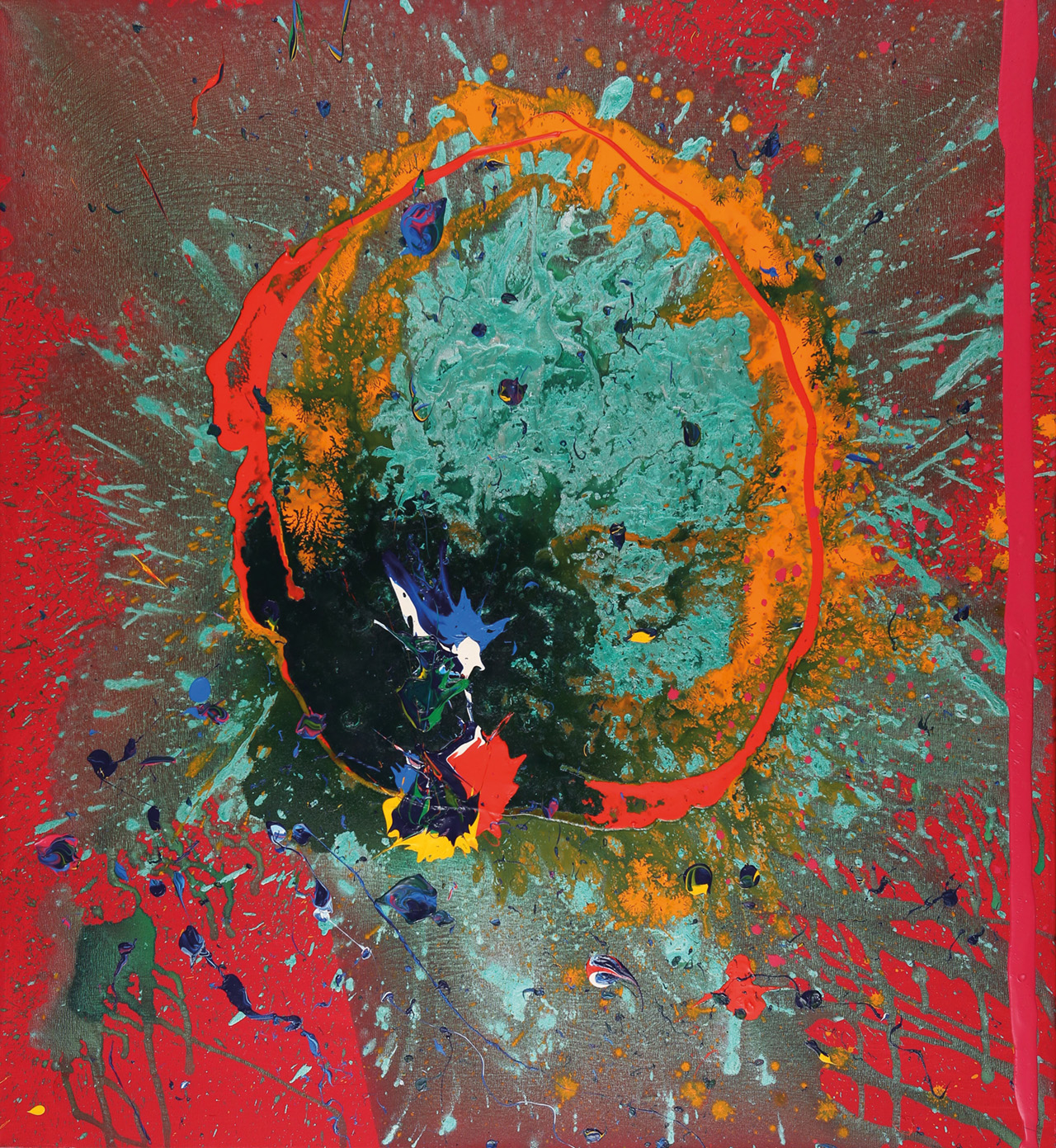In the frame:
John Hoyland
In his last years Sheffield artist John Hoyland celebrated life with a final burst of artistic energy
“When one is young and has experienced a good deal of rejection, you want to show everyone how tough you are. Later, you want to show how clever you are. Later still, you want to see how far you can push yourself. And finally, you don’t give a fuck about anything – you just want to howl at the moon.” – John Hoyland, 2006
Born in Sheffield in 1934, Hoyland became a force in abstract painting during the 1960s, known for his strong colour and inventive forms. Initially influenced by the large scale of American Abstract Expressionists such as Mark Rothko, his style evolved. By the 1990s he had developed a visionary, semi-figurative language, inspired by travels to Bali and Jamaica and populated with schematic figures, birds, trees, suns, moons and cosmic spirals.
The Millennium Gallery is showing paintings from the last eight years of Hoyland’s life, marking ten years since his death in 2011. In those years he suffered increasing ill health, leading to major heart surgery in 2008. He never fully recovered, but on leaving hospital he felt “a distinct sharpening of the senses.” The wavering line of his surgical scar was incorporated into a number of paintings, while works such as Restless Heart (2008) turned this difficult experience into statements of a life lived passionately and at full throttle. Illness both shortened Hoyland’s life and produced a late burst of energy.
The semi-figurative language of his paintings of the 1990s receded, although did not disappear entirely, as can be seen in the falling bird in The Swoop (2003). He often threw paint or squirted it in straight from the tube, not in an uncontrolled way but with a calculated sense of risk. He spoke about “trying to capture the way nature behaves.” Common to all these paintings is a vivid emptiness. Intergalactic voids are juxtaposed with flashes of bright, joyful colour. In these paintings, stylish and sometimes provocatively lurid, Hoyland reckoned with mortality and celebrated life.
He painted an occasional series of elegies, after the deaths of close friends. One of the earliest is dedicated to the painter Terry Frost, completed just a few weeks after Frost’s death in September 2003. A shadowy presence emerges and recedes into a shimmering expanse of emerald green, while a motif suggesting both the sun and an inescapable vortex is fringed with red, yellow, black and white, characteristic colours of Frost’s painting.
As well as memorialising close friends, Hoyland paid tribute to his artistic heroes. Most important of these was Vincent Van Gogh, to whom he dedicated more than ten paintings. While studying at Sheffield College of Art Hoyland would ramble round the post-war city with fellow student and close friend Brian Fielding, later a formidable artist in his own right, imagining they saw Van Gogh’s famous Starry Night (1899) “at every corner”. Hoyland’s Night Sky (2005) looks back to this formative time, more than half a century later.
Hoyland’s final painting, Moon in the Water (2011), was completed a few months before his death. It was the last work in his series The Mysteries. A burning red orb shines in a densely textured void that is both dark and radiant, flecked with bright yellow sparks. Its title was taken from a so-called death poem by 19th century Japanese Zen master Gizan. Such poems were written to console the discipline’s members after their master’s death.
Coming and going, life and death:
A thousand hamlets, a million houses.
Don’t you get the point?
Moon in the water, blossom in the sky.
The title of Hoyland’s last work leaves the last phrase of Gizan’s poem poignantly unsaid.
John Hoyland: The Last Paintings is at the Millennium Gallery Sheffield until 10 October. A book of the same name, with essays by Natalie Adamson, David Anfam, Matthew Collings and Mel Gooding, is edited by Sam Cornish and Wiz Patterson-Kelly is published by Ridinghouse

Leave a reply
Your email address will not be published.